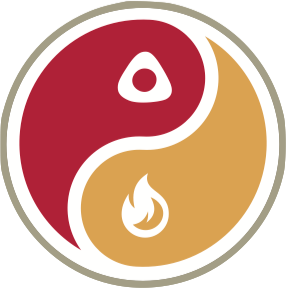Toxic Plant of the Day: Cassava Root
Life lives off of life and all living things must defend themselves to survive. Plants, lacking the ability to run, have survived via biochemical warfare. This is one reason that, unlike with meat, it’s almost always better to eat plants that have been cooked or specially processed than raw, if you choose to eat them at all.
Starches became important sources of food in populations where the food we evolved to eat, high-fat meat, had been hunted to extinction, or where the culture was driven by surrounding cultures to a small area that could not support them on game alone. However, eating starches, involved arduous processing, in order to render them edible. Cassava is no exception.
Cassava (perhaps better known here as tapioca) is a starchy root. Its defence is cyanide. Like many other plants, the formation of its toxin happens when the plant cells are broken — that is, it evolved to be triggered by the bite of an insect or other animal. Cassava can be extremely toxic, especially the larger varieties. The toxicity increases under drought conditions. An ounce of a more toxic variety would be enough to kill a rat [1].
The acute response to eating it raw or insufficiently processed is vertigo, vomiting, collapsing, and possibly death. One can only imagine the desperation that we must have undergone to have found a way to eat this after such an effect. The traditional way to circumvent it is prolonged soaking, fermenting, and cooking. Contrary to the new common wisdom, fermenting became a tradition not because our gut bacteria need the resulting bacteria, but because we were using bacteria to process out toxins.
However, it isn’t always done right, and even when it is, it isn’t 100% effective. To quote some researchers who are trying to genetically modify the plant:
“Chronic, low-level cyanide exposure is associated with the development of goiter and with tropical ataxic neuropathy, a nerve-damaging disorder that renders a person unsteady and uncoordinated. Severe cyanide poisoning, particularly during famines, is associated with outbreaks of a debilitating, irreversible paralytic disorder called Konzo and, in some cases, death. The incidence of Konzo and tropical ataxic neuropathy can be as high as 3 percent in some areas.”
In a paper describing the epidemic of these neurological diseases, it is pointed out that cassava consumption has risen dramatically in the last half century, precisely because it grows well in droughts and poor soil, that condition that increases its toxicity.
“From 1965 to 2000, cassava cultivation in Africa showed an extraordinary increase, from 35 million to 90 million tons, at least partly in response to declining soil fertility and increased cost of inorganic fertilizers. For countries such as DRC, Tanzania, and northern Mozambique, cassava is the most important crop for the largest proportion of farming households [29]–[31]. The amount of labour required for cassava cultivation is considerably less than that for other crops, and this is a major reason for its promotion and increasing use in HIV/AIDS-affected communities [32].
Cassava is drought tolerant, grows on poor soils without fertilizer where no other staple can be cultivated, and generates acceptable yields even on depleted and marginal lands. Its roots may be kept in the soil for extended time periods, securing a carbohydrate source in years of agricultural crisis in poor communities, and bridging the seasonal food gap during the hungry and dry season when other crops usually fail [31], [33]. It is no surprise that in times of agricultural crisis, cassava becomes the dominant, and sometimes the only, source of food.”
They also point out that the toxic effect is worsened in protein-deficient conditions, because sulfur-rich amino acids (cysteine and methionine) are needed by a detoxifying enzyme in the liver. Animal foods are almost the only sources of these amino acids, though some nuts, spirulina, and soybeans have some.
Other cyanogenic plants include: hydrangea, flax, lima bean, apple, elderberry, white clover, and corn.
Wikipedia gives the more toxic varieties 1g/kg of cyanogenic glucosides, and says that 25 mg of pure cyanogenic glucides would kill a rat.
